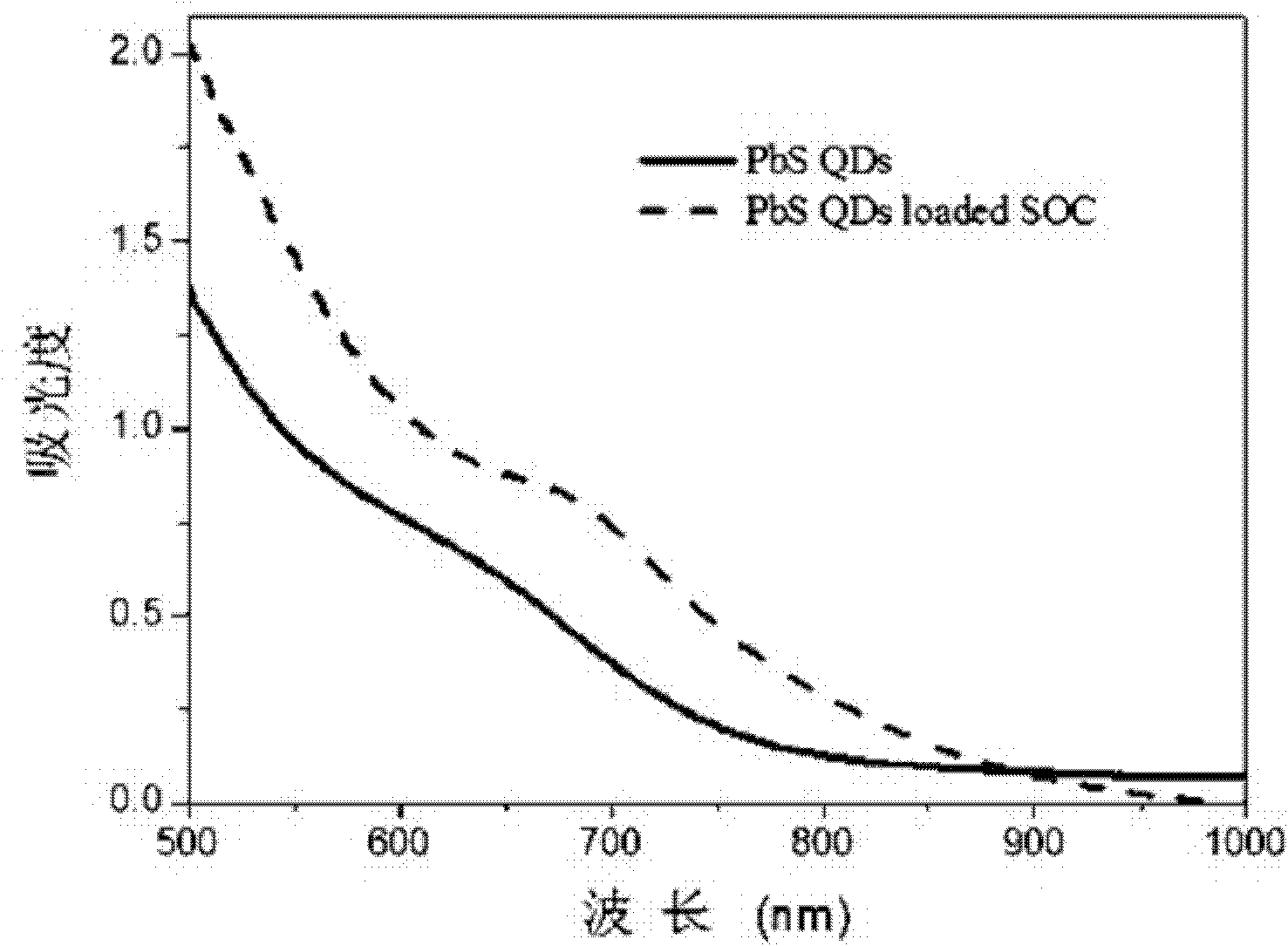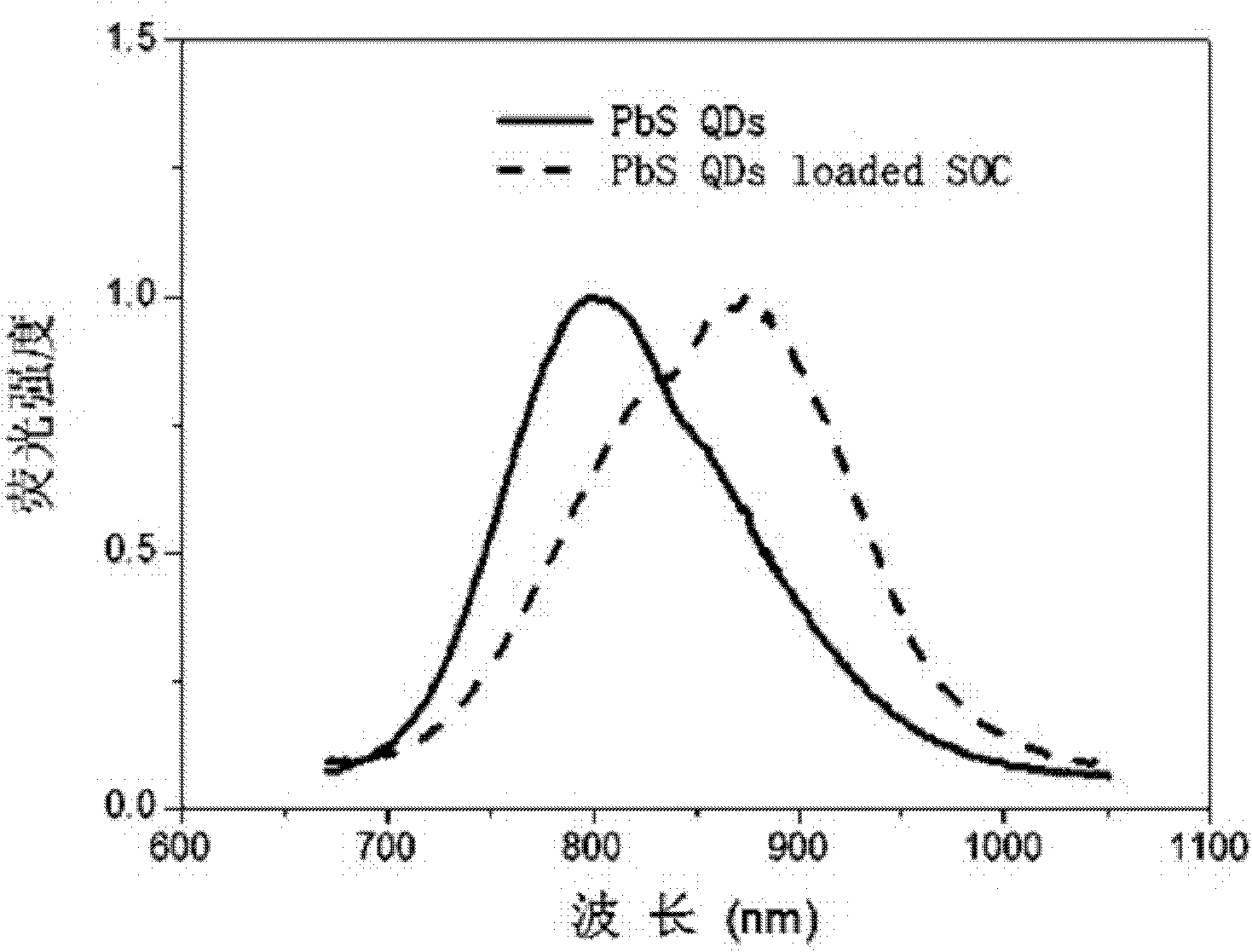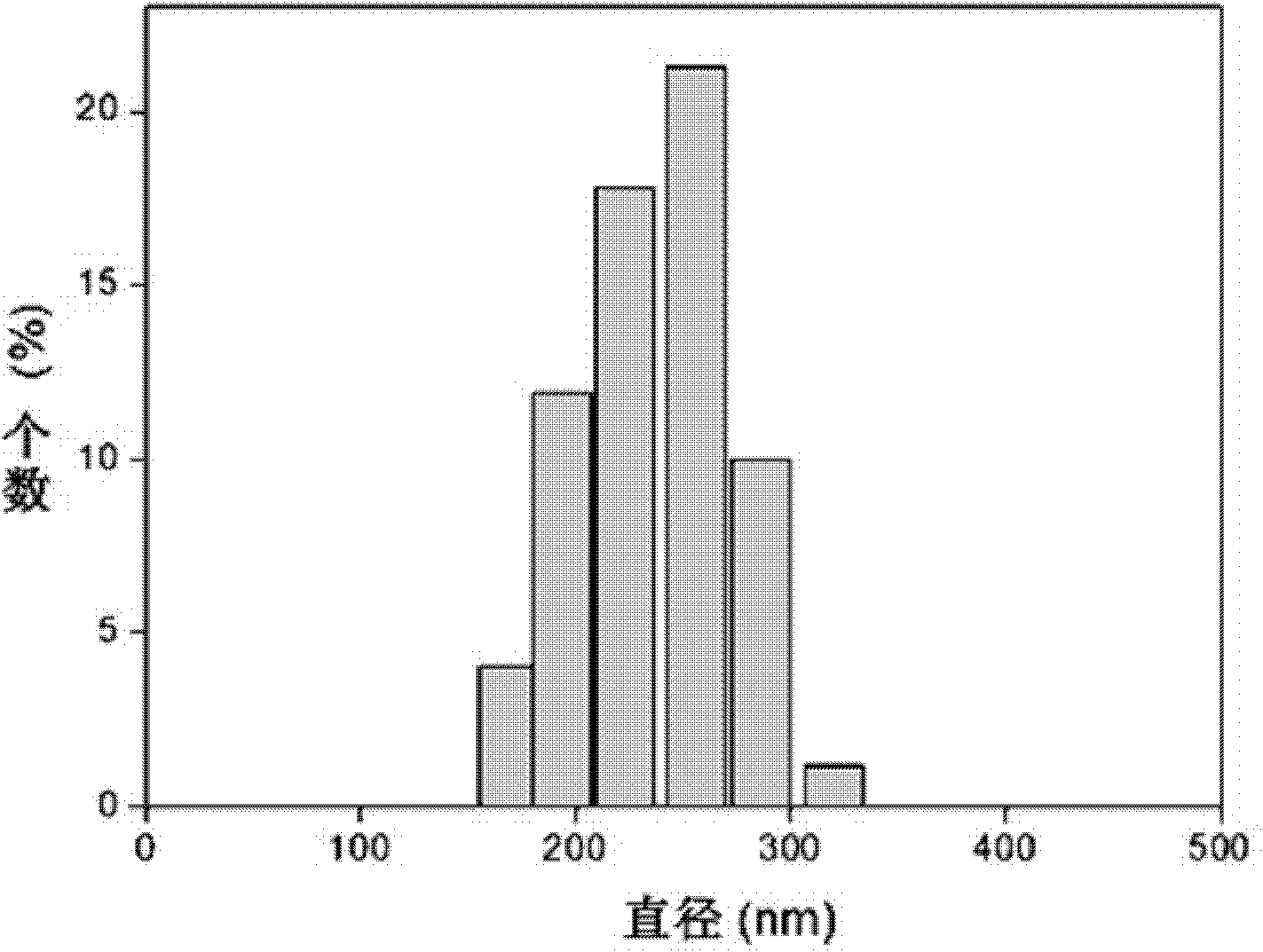A kit for in-situ non-destructive detection of tumors and its preparation method
A kit and organic solvent technology, applied in the fields of pharmacy, analysis and detection, and medicine, can solve the problems of incomplete application of hydrophobic quantum dot encapsulation, poor dispersion performance of hydrophobic quantum dots, complicated operation steps, etc., so as to increase the photostability. and biocompatibility, improved stability and biocompatibility, good biocompatibility
- Summary
- Abstract
- Description
- Claims
- Application Information
AI Technical Summary
Problems solved by technology
Method used
Image
Examples
Embodiment 1
[0028] Preparation of Fluorescent Probes Embedded in Chitosan Micelles with Hydrophobic Quantum Dots
[0029] 1. Preparation of N-succinyl-N'-octyl chitosan micelles:
[0030] (1). Preparation of N-succinoyl chitosan micelles (SC)
[0031] Chitosan 1g was dissolved in 4.8% succinic acid (20ml) solution, was diluted with methanol (80ml) solution dropwise, mechanically stirred at room temperature, was added dropwise with succinic anhydride solution (succinic anhydride: 2-amino-β- The molar ratio of 1,4-glucan was 5:1, and the stirring was continued at room temperature for 48 hours, the pH of the system was adjusted to 7 with 5% sodium hydroxide solution, the precipitate was collected by centrifugation, dialyzed and freeze-dried.
[0032] (2). Preparation of N-succinyl-N'-octyl chitosan (SOC)
[0033]1g of N-succinyl chitosan was dissolved in 1% acetic acid (50ml) solution, and octanal was added dropwise under stirring (octylal: 2-amino-β-1,4-glucan mole ratio was 2:1 ), after...
Embodiment 2
[0045] Preparation of Fluorescent Probes Embedded in Chitosan Micelles with Hydrophobic Quantum Dots
[0046] 1. Preparation of N-octyl-O-sulfate chitosan (OSC) micelles:
[0047] (1). Preparation of N-octyl chitosan micelles (OC)
[0048] 1g of chitosan was dissolved in 1% acetic acid (50ml) solution, and octanal was added dropwise under stirring (octylaldehyde: 2-amino-β-1, 4-glucan mole was 2: 1), and continued stirring After 4 hours, the pH was adjusted to 4 with a small amount of sodium hydroxide, and sodium borohydride solution was added dropwise and stirring was continued for 12 hours. Filtrate, adjust the pH to 7 with sodium hydroxide, and a large amount of precipitation occurs. The precipitate was collected by centrifugation, dissolved in water, dialyzed, and freeze-dried.
[0049] (2). Preparation of N-octyl-O-sulfate chitosan (OSC)
[0050] 1 g of OC was dissolved in DMF (40 ml) and stirred overnight. Add sulfuric acid ester dropwise in the DMF (40ml) solution,...
Embodiment 3
[0058] Preparation of Fluorescent Probes Embedded in Chitosan Micelles with Hydrophobic Quantum Dots
[0059] 1. Preparation of N-succinyl-N'-palmitoyl chitosan (SPC) micelles:
[0060] (1). Preparation of N-succinoyl chitosan micelles (SC)
[0061] Chitosan 1g was dissolved in 4.8% succinic acid (20ml) solution, was diluted with methanol (80ml) solution dropwise, mechanically stirred at room temperature, was added dropwise with succinic anhydride solution (succinic anhydride: 2-amino-β- 1,4-dextran molar ratio is 5:1), stirring was continued at room temperature for 48 hours, 5% sodium hydroxide solution was used to adjust the pH of the system to 7, the precipitate was collected by centrifugation, dialyzed and then freeze-dried.
[0062] (2). Preparation of N-succinoyl-N'-palmitoyl chitosan (SPC)
[0063] 1g N-succinyl chitosan was dissolved in 100mL DMSO solution, and was added dropwise under stirring conditions with palmitic anhydride (palmitic anhydride: 2-amino-β-1,4-glu...
PUM
| Property | Measurement | Unit |
|---|---|---|
| particle diameter | aaaaa | aaaaa |
| molecular weight | aaaaa | aaaaa |
| particle diameter | aaaaa | aaaaa |
Abstract
Description
Claims
Application Information
 Login to View More
Login to View More - R&D
- Intellectual Property
- Life Sciences
- Materials
- Tech Scout
- Unparalleled Data Quality
- Higher Quality Content
- 60% Fewer Hallucinations
Browse by: Latest US Patents, China's latest patents, Technical Efficacy Thesaurus, Application Domain, Technology Topic, Popular Technical Reports.
© 2025 PatSnap. All rights reserved.Legal|Privacy policy|Modern Slavery Act Transparency Statement|Sitemap|About US| Contact US: help@patsnap.com



